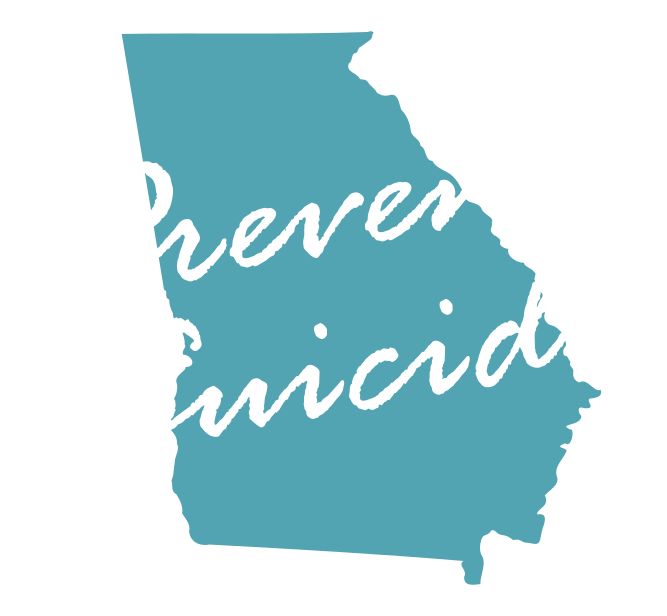About Suicide

Understand Suicide
Feelings and thoughts of suicide are usually brought by a combination of factors in a person’s life that bring them to a place of desperation. The good news is that while the things that may lead someone to feel like suicide is an option are complex, most people who get the right help do not die by suicide.
Understanding suicide, from the things that can cause someone to be at risk to knowing how to help someone can greatly increase our opportunities to save lives. For more information about recognizing and responding to suicide, see the sections below.
Risk Factors
Risk factors are characteristics of a person or their environment that increase their vulnerability to suicide thoughts and potential for death by suicide. The more risk factors that exist in an person’s life, the higher their risk for suicide thoughts, attempts, or death.
Commonly identified risk factors include, but are not limited to:
- History of suicide thoughts or behaviors, especially prior attempt(s)
- Mental disorders, particularly depression and other mood disorders
- Misuse and abuse of alcohol or other drugs
- Job or financial loss
- Chronic disease / chronic pain
- Recent diagnosis of terminal illness (within past 12 months)
- Traumatic brain injury
- Disability and functional decline / impairment, actual, perceived, or anticipated
- Exposure to someone who died by suicide, especially a family member
- Nonsuicidal self-injury
- Individual impulsivity and aggression
- Psychological factors: feelings of hopelessness, cognitive rigidity, feelings of being trapped, impaired decision-making, negative evaluations of self and future, feeling like a burden to others
- Perception that suicide is a common and acceptable response to distress
- Personal access to lethal means
- Social isolation / disconnection
- Relationship conflict, discord, or loss
- Sexual-or gender-based violence
- Intimate partner violence
- Experiencing natural disaster
- Stresses of acculturation and dislocation
- Stress resulting from prejudice and discrimination
- Juvenile justice involvement, especially in custody
- History of out-of-home care or adopted

Protective Factors
Protective factors are personal (things about the person) or environmental (things around the person) characteristics that help protect a person from suicide. The more protective factors that are activated in a person’s life, the better their chances of resisting suicide thoughts.
Some protective factors include, but are not limited to:
- Availability of physical and mental health care
- Effective clinical care for mental, physical, and substance use disorders
- Supportive relationships with health care providers
- Connectedness to individuals, family, community, and social institutions
- Life skills (including problem solving skills and coping skills, ability to adapt to change)
- Positive self-esteem and a sense of purpose or meaning in life
- Cultural, religious, or personal beliefs that discourage suicide
- Restrictions on lethal means of suicide
- Safe and supportive schools and community environments
- Reasons for living (e.g., children in the home)
- Specific plans for the future
- Sources of continued care after psychiatric hospitalization
- Sobriety, along with attendance of mutual support group meetings
- A sense of control over one’s future
- Positive school or employment experience
- Positive, optimistic outlook (i.e., hope)
- Cultural continuity
Precipitating Factors
Precipitating factors are stressful events that can bring on a suicide crisis for someone who is at risk for or vulnerable to suicide.
A few examples of precipitating factors include, but are not limited to:
- End of a relationship or marriage
- Death of a loved one, including a pet
- An arrest, or upcoming / pending judicial hearing
- Serious financial problems
- Public humiliation (actual or anticipated)
- Episode of substance or alcohol use after a period of recovery
- Losing a scholarship, job, or promotion
- Academic failure
- Other life stressor or crisis
Warning Signs
Warning signs are things a person says or does that may indicate they are at immediate risk for suicide.
- Talking or writing about wanting to die or to kill oneself
- Looking for a way to kill oneself, such as searching online or obtaining a firearm or other means by which to die
- Talking about feeling hopeless or having no reason to live
- Talking about feeling trapped or in unbearable pain
- Talking about being a burden to others
- Increasing the use of alcohol or drugs
- Acting anxious or agitated; behaving recklessly or extreme risk-taking
- Sleeping too little or too much
- Withdrawing or feeling isolated
- Showing rage or talking about seeking revenge
- Displaying extreme mood swings
- Giving away prized possessions
If you are concerned someone is thinking about suicide, it is always appropriate to check in with that person to see how they are doing and to even ask if they are thinking about ending their life in an open, caring manner.
For tips on how you can help when you are concerned someone may be thinking about suicide, download our Prevention Wallet Card.
